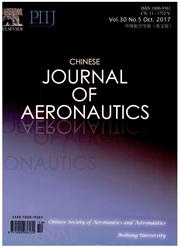

 中文摘要:
中文摘要:
A novel biased proportional navigation guidance(BPNG) law is proposed for the close approach phase, which aims to make the spacecraft rendezvous with the target in specific relative range and direction. Firstly, in order to describe the special guidance requirements, the concept of zero effort miss vector is proposed and the dangerous area where there exists collision risk for safety consideration is defined. Secondly, the BPNG, which decouples the range control and direction control, is designed in the line-of-sight(LOS) rotation coordinate system. The theoretical analysis proves that BPNG meets guidance requirements quite well. Thirdly, for the consideration of fuel consumption, the optimal biased proportional navigation guidance(OBPNG) law is derived by solving the Schwartz inequality. Finally, simulation results show that BPNG is effective for the close approach with the ability of evading the dangerous area and OBPNG consumes less fuel compared with BPNG.
 英文摘要:
英文摘要:
A novel biased proportional navigation guidance (BPNG) law is proposed for the close approach phase, which aims to make the spacecraft rendezvous with the target in specific relative range and direction. Firstly, in order to describe the special guidance requirements, the concept of zero effort miss vector is proposed and the dangerous area where there exists collision risk for safety consideration is defined. Secondly, the BPNG, which decouples the range control and direc- tion control, is designed in the line-of-sight (LOS) rotation coordinate system. The theoretical anal- ysis proves that BPNG meets guidance requirements quite well. Thirdly, for the consideration of fuel consumption, the optimal biased proportional navigation guidance (OBPNG) law is derived by solving the Schwartz inequality. Finally, simulation results show that BPNG is effective for the close approach with the ability of evading the dangerous area and OBPNG consumes less fuel compared with BPNG.
 同期刊论文项目
同期刊论文项目
 同项目期刊论文
同项目期刊论文
 期刊信息
期刊信息
